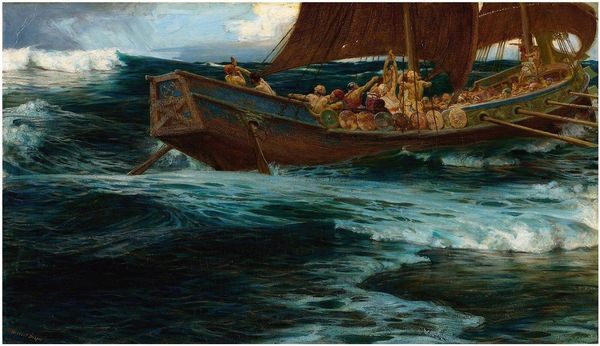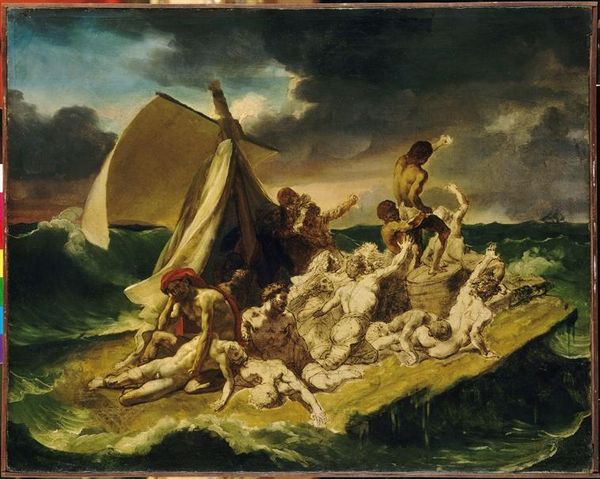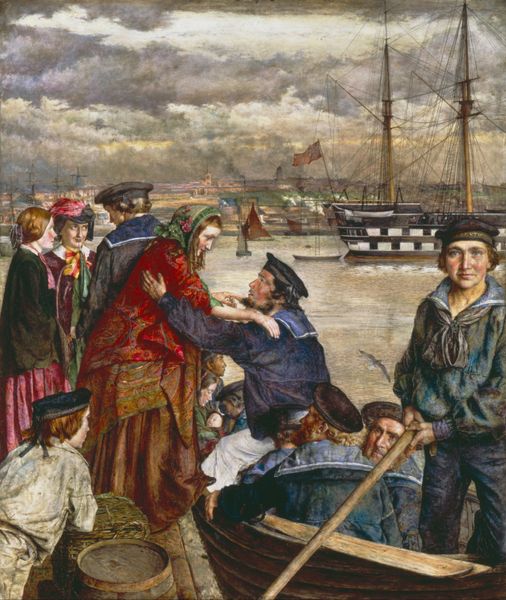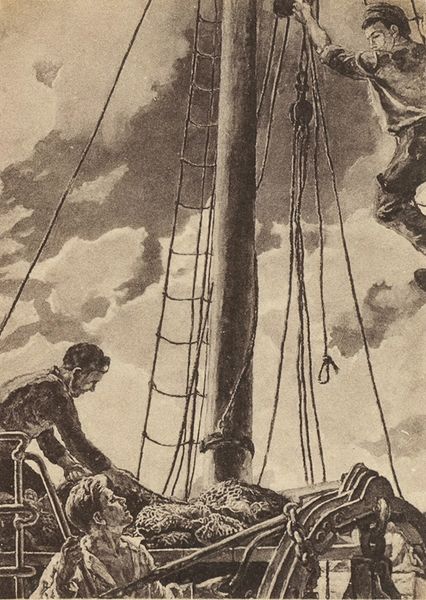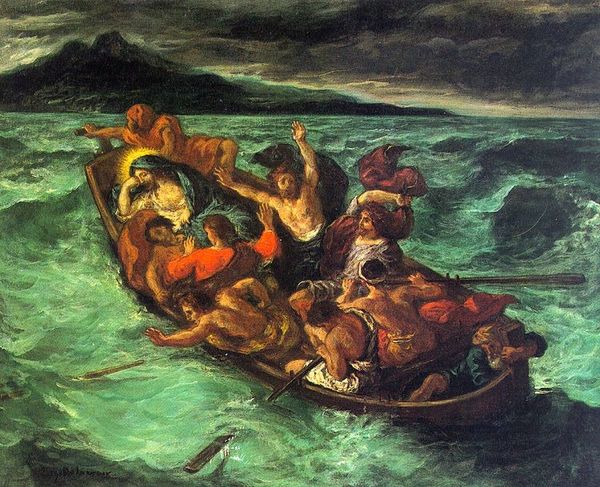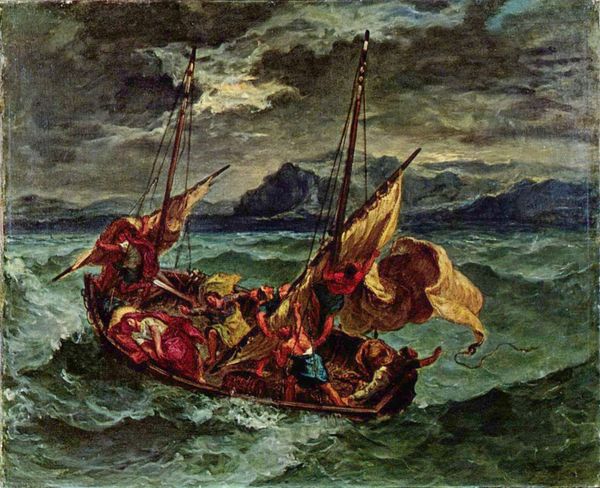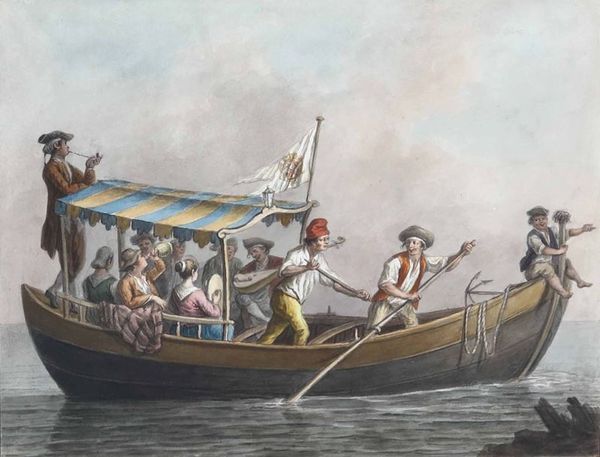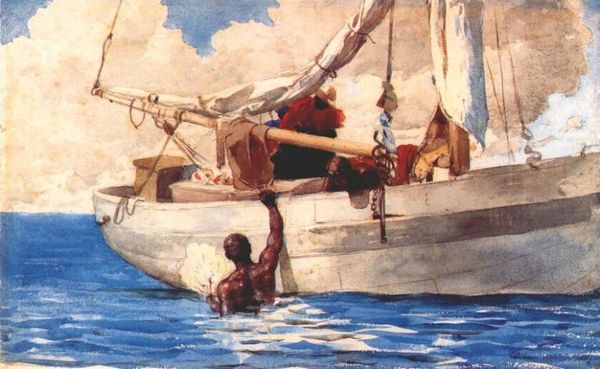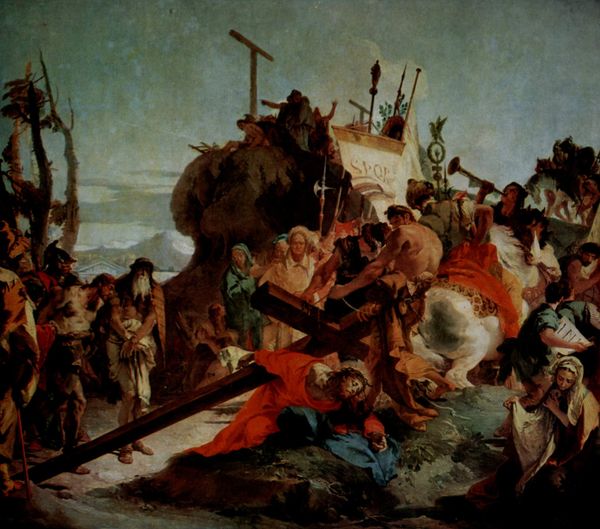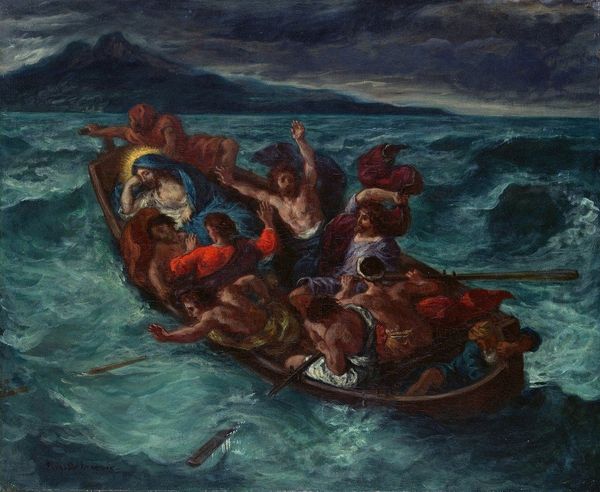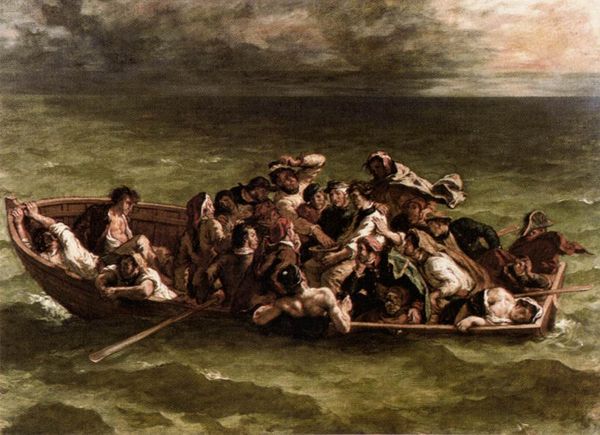
painting, print, oil-paint, photography
#
boat
#
still-life-photography
#
painting
# print
#
oil-paint
#
landscape
#
soviet-nonconformist-art
#
photography
#
oil painting
#
water
#
genre-painting
#
history-painting
#
watercolor
#
realism
Copyright: Leonid Muchnyk,Fair Use
Editor: What an interesting composition; a small rowboat laden with figures and provisions juxtaposed against the might of a battleship. There's an inherent drama there, isn't there? Curator: Indeed. This piece, titled "Supply of Provision to the Battleship Potemkin", was created in 1935 by Leonid Muchnyk, employing oil paint to capture a moment ripe with socio-political significance. The formal arrangement is crucial here. The immediate foreground presents the small vessel almost overwhelmed by its cargo, leading the eye back to the colossal ship, an interplay of scale and visual weight. Editor: I see echoes of earlier traditions here. The red flag and the brimming baskets... there's a decided echo of offering or even sacrifice about this image. Curator: The chromatic choices undoubtedly contribute to that impression. Observe how the artist uses a limited palette, dominated by ochres, browns, and creams. The sudden burst of crimson in the tomatoes and the flag acts as a visual fulcrum, directing the viewer's interpretation towards concepts of fervor and sustenance. Editor: The Potemkin, of course, gained its fame through revolutionary symbolism, in mutiny against the Tsarist regime, so those ripe red tomatoes have all the qualities of fresh blood, no? They feed the rebellion both literally and figuratively. Curator: It is difficult to ignore the power the ship still held so many years after. The artist uses realist techniques here, of course, but note how the details of the battleship fade slightly, rendered in a softer focus compared to the boat in the foreground. This reinforces a symbolic reading, where the idea of the Potemkin is perhaps as potent as the ship itself. Editor: So the visual language evokes notions of provision, not merely as supplying goods, but also of nourishing a revolutionary cause, with the Potemkin functioning as an enduring emblem. Curator: Precisely. The success of the image relies upon a skillful use of pictorial structure married to loaded cultural symbols. I would say Muchnyk masterfully utilizes those structures to frame a powerful, if subtly propagandistic, narrative. Editor: An astute interpretation. Thank you for revealing those layered intricacies. Curator: My pleasure; art speaks loudest when structure and symbol meet, would you not agree?
Comments
No comments
Be the first to comment and join the conversation on the ultimate creative platform.
